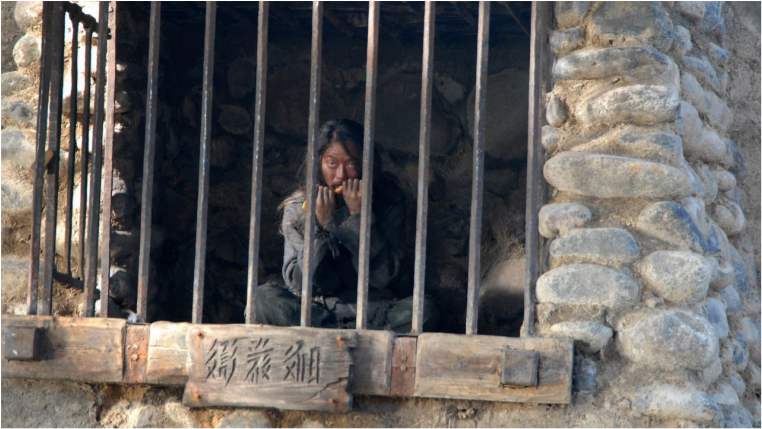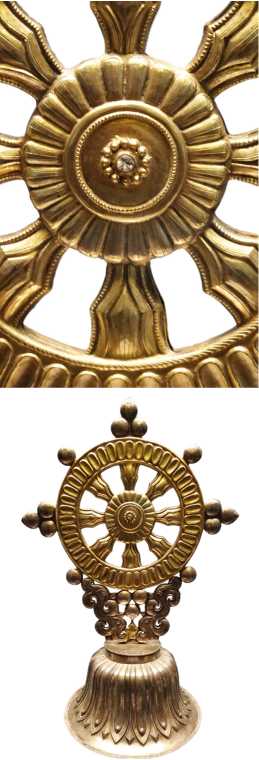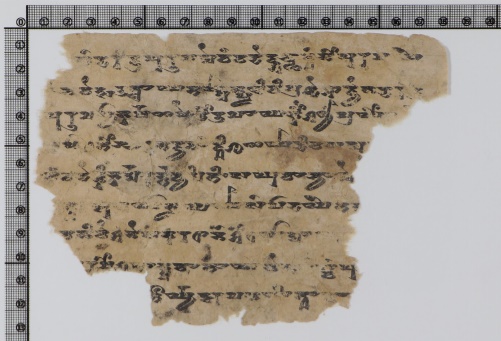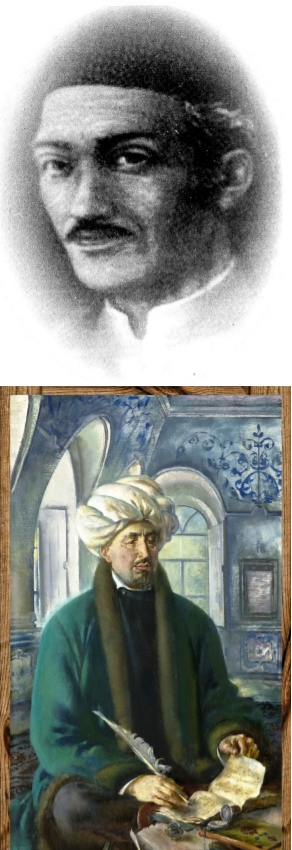Personalia in Memoriam 
On May 9, 2021, passed away our dear friend and colleague Professor Valery Androsov. He initiated the periodical Orientalistica and was its first editor-in-chief.
PHILOSOPHY OF THE EAST. History of philosophy 
The Russian Oriental studies are rich and diverse in their disciplines. The focus of research activities conducted mainly at the university centres of St. Petersburg, Moscow, Kazan, and during Soviet times in the capitals of some republics (Azerbaijan, Kazakhstan, Tajikistan, Uzbekistan, etc.), was largely determined by the domestic political and geopolitical interests of the Russian Empire. Thus, a philosophical aspect in oriental studies, as well as university philosophical education practical^ did not exist. The changes brought by the revolution of 1917 have greatly affected all fields of social life, including the academic milieu. The article examines a complex and contradictory path of development of the national philosophy, on the example of the Institute founded in 1921 by Gustav Gustavovich Speth (1879-1937), nowadays the Institute of Philosophy of the Russian Academy of Sciences. The latter has become the main focal point of the philosophical research activities in the former Soviet Union. Particular attention is paid to the liberation from the Eurocentrism inherited from imperial times concerning the spiritual heritage of the peoples of the East as a whole, and in philosophy in particular. The pivotal points of its activity became “History of Philosophy” in 3 Volumes (19411943) and “History of Philosophy” in 6 Volumes (1957-1966). The real breakthrough was the encyclopedias, such as: “The New Philosophical Encyclopedia” in 4 volumes (2001); “Indian philosophy. Encyclopedia” (2009); “The Philosophy of Buddhism: Encyclopedia” (2011). The Orientalist aspect in higher philosophical education nowadays becomes more visible. The recent international recognition of the achievements of the Russian Orientalist philosophical studies regardless of a relatively small number of specialists is largely due to their collective efforts and close cooperation.
PHILOSOPHY OF THE EAST. Philosophy of religion and religious studies 
According to Buddhist teaching icchantikas are sentient beings that cut off their roots of merit (abilities to free themselves from three basic vices, greed, hatred and ignorance). In Hinayana doctrine icchantikas are doomed to be in samsara forever, without hope of deliverance. But in Mahayana even those who had cut off their roots of merit can restore them due to the infinite compassion of bodhisattvas and attain nirvana at last. Bodhisattva, knowing the illusoriness of the difference between nirvana and samsara, rises above it and can act in samsara for the salvation of all sentient beings without losing the state of enlightenment. So bodhisattva is similar to icchantikas in that he intentionally refuses to leave samsara, but, unlike them, his motive is not depravity but great compassion (mahakaruna). Paradoxical phrase “bodhisattva-icchan-tika” is a rhetorical method aimed at the activation of hearer's or reader's attention in order to let him to fully comprehend the essence of the teaching and promote him to the attainment of nirvana.
HISTORY OF THE EAST. Universal history 
The article puts forward a hypothesis about the capture of Genghis Khan by the Tanguts during his attack on the Tangut state of Xi Xia in 1207-1208. The only source that provides this information is the work of Guillaume de Rubruk, who visited Mongolia in 1253-1255. No supporting information has yet been found, however, there is no data that would completely exclude the possibility of Genghis Khan being captured. On the basis of Chinese, Mongolian, Persian, Tibetan, and Tangut sources, the author reconstructs a picture of the Mongol invasions into Xi Xia in search of the moment when this event had the maximum chance to occur. Special attention is paid to the goals that the Mongols may have set in each of the five documented attacks on the Tangut country. Analysis of the sources suggests that the nature of these raids changed dramatically after the second Tangut campaign of 1207-1208: predatory raids were replaced by a full-scale war, which ended with the submission of Xi Xia to the Mongols. Perhaps the reason for this was revenge for the stay of the Mongol leader in Tangut captivity. The possibility of Genghis Khan being held captive in the Chin Empire is also briefly discussed, which is also only reported in a thirteenth-century Chinese diplomat's essay
HISTORY OF THE EAST. Ethnology, Anthropology and Ethnography 
The Tibetan collection of the State Hermitage contains some of the gifts of the 13th Dalai Lama to the Russian Emperor Nicholas II. The State Archives of the Russian Federation has a document titled “A copy of the list of Tibetan gifts sent to the Winter Palace”. It consists of two lists, the first list describes 14 items, the second - 9. Almost all of these gifts were in the private rooms of Nicholas II in the Winter Palace. Of course, not all things have survived to this day. Number 1 in the first list is the chakra (wheel of teaching), the sign of the king offered to the Tibetan rulers upon accession to the throne, as a sign of goodwill (Inventory No. KO-884, Tibet, late 19th century); number 4 is a silver teapot, partially gilded (Inventory No. KO-896, Tibet, end of the 19th century); number 5 - men’s turquoise hoop earring; at number 9 - a gold reliquary gau (Tib. Ga'u), decorated with turquoise, such were worn and are worn by Tibetan women on the chest; at number 10 - women’s gold earrings decorated with turquoise. Earrings and a reliquary after the organization of the Oriental Department and the redistribution of exhibits were included in the collection of art objects of Central Asia. From the second list, presumably, there is a sculpture of Buddha Shakyamuni in the Hermitage collection. It is quite possible that enamel objects and some others have also been preserved in different collections of the Oriental Department. In addition, the collection contains two pencil portraits of the 13th Dalai Lama, painted by the Russian artist N. Ya. Kozhevnikov in 1905 in Urga (present-day Ulan Bator). The Dalai Lama was hiding in Mongolia during the British expansion into Tibet in 1903-1904. Thus, some of the gifts of the 13th Dalai Lama are presented in the Tibetan collection of the Hermitage. Some of them are masterpieces, such as the silver chakra, others are very typical ethnographic objects.
HISTORY OF THE EAST. Historiography, source critical studies, historical research methods 
The article provides a study of a newly discovered manuscript fragment from the Serindia Collection (IOM, RAS), containing the Sanskrit text of the Lotus Sutra. Currently, the group of the Sanskrit Lotus Sutra manuscripts from the Serindia Collection comprises 28 items. Some folios and fragments among them remain unpublished. The goal of the article is to introduce to the specialists a previously unpublished fragment of the Sanskrit Lotus Sutra. This manuscript fragment is preserved in the Oldenbourg sub-collection (part of the Serindia Collection), call mark SI 4645. According to the documents from the IOM RAS archive, this fragment was acquired by Serguei F. Oldenbourg in Kizil-Karga during his first expedition to Eastern Turkestan (1909-1910). The text of the manuscript is an excerpt from the 4th chapter of the Lotus Sutra, which contains “The Parable of the Prodigal Son”. The article provides facsimile reproduction of the fragment SI 4645 accompanied by transliteration and translation into Russian. It also outlines the physical features of the manuscript, provides a brief description of the text of the fragment SI 4645 and offers its comparison with the other well-known texts of the Lotus Sutra. The comparison of the fragment with several texts representing two Sanskrit “editions” (versions) of the Lotus Sutra shows that the fragment SI 4645 stands closer to the Gilgit-Nepalese “edition” of the Sutra, while the majority of the Lotus Sutra manuscripts from the Serindia Collection reveal features of the Central Asian “edition”.
LITERATURE OF THE EAST. Theory of literature 
The article deals with the Christian legend about the persecution and martyrdom of Daniel and his three companions at the hands of a wicked Persian king. This story is found in mediaeval Eastern Orthodox liturgical, hagiographical, and homiletical texts and is based on extracanonical traditions similar to those of the “rewritten Bible” in the Old Testament Pseudepigrapha. The article demonstrates how the “canonical” story about Daniel and the Three Youths developed into this legend, which narrates their martyrdom for Christ and their subsequent resurrection together with him. The origins and textual history of this legend are discussed, as well as its content and structure. It is demonstrated that this legend combines a martyrological account, which is similar to the narrative of Dan 3, 6; 2 Macc 7, with a reinterpretation of stories about biblical heroes. In addition, it is shown how the tradition about the resurrection of the righteous, which is based on an eccentric exegesis of the New Testament passages of Math. 27:52-53 and 1 Cor 15:6, functions in this legend. The liturgical, homiletic and hagiographical traditions regarding the martyrdom and the resurrection of Daniel and the Three Youths.
LITERATURE OF THE EAST. Theory of literature. Textology 
The article deals with pilgrimage stories of two prominent Islamic figures, the Malay writer, publisher and teacher Abdullah Munshi (1796/7-1854) and the Tatar theologian and educator Shihabuddin Mardjani (1818-1889). Their Hajj travel diaries dating respectively from 1854 and 1880 allow us to reveal the kinship of their views and interests and the dissimilarity of the cultural and confessional contexts in which they lived and worked. For the Muslims of insular Southeast Asia, an equal problem was both comprehension of the subtleties of the Arabic language, understanding the meanings of the Koran - and mastery of the Malay literary language. There were no schools where both of these subjects would be taught, where religious preaching would go hand in hand with the study of secular disciplines and the achievements of modern science, just as it was practised in the so-called “new method” madrasahs of the Russian Empire at the end of the 19th - beginning of the 20th centuries, the herald of which was Shihabuddin Mardjani. Until now, the situation in the Malay world has not changed: the “liberal” Islam is opposed to the “literal” Islam, with its inherent rigorism of the Middle Eastern type.
LITERATURE OF THE EAST. Literature of the peoples of foreign countries 
The article deals with one of the first major historical and literary texts of medieval Mongolian literature “The Secret History of the Mongols” (1240). The text was found and made public by the Russian Orientalist Scholars as early as the 19th cent. The Mongolian text transcribed in Chinese was discovered in the Chinese Imperial Library (Beijing) by Archimandtrite Palladios (Petr Ivanovich Kafarov). He published the original text accompanied with translation, commentaries and an index in 1866 in the Proceedings of the Russian Orthodox Ecclesiastical Mision in Beijin. In 1941 S. A. Kozin (Sergei Andreevich Kozin) published research on “The Secret History of the Mongols”, which was highly acclaimed among the specialists in Mongol studies. This research comprised the reconstruction of the original prosaic and poetical Mongolian Urtext. The author's research principles became a landmark in the Mongolian medieval studies both in Europe and Asia. Following the guidelines as suggested by S. A. Kozin the present research deals with the issues of translation and interpretation of medieval Mongolian texts, principles of commentary concerning their specific features in the Russian Mongolian studies.
CHRONICLE. Reviews 
The article offers a review of the George Roerich Annual International Meeting, the conference dedicated to the memory of G. N. Roerich. Traditionally, there participate the scholars whose research interests correspond to the main areas of activity of George Roerich (russ.: Yurii Nikolaevich Rerikh 1902-1960), the outstanding scholar, artist and traveller. Most of the contributions are original studies on the little-studied areas of culture, philology, philosophy, and art of Tibet, India, and other countries associated with this area. Similarly to the last year, the contributions were united under a joint title “Text and the Genesis of Notions and Meanings in Culture”. While exploring the material of ancient and medieval authentic texts, the speakers dealt with a variety of theoretical problems related to the formation of culture and the specific features of the generation, translation and functioning of the text.
ISSN 2687-0738 (Online)


























